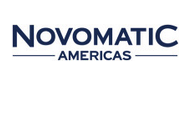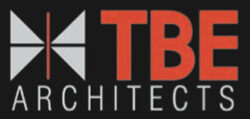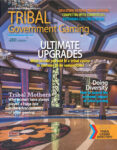
As the industry emerges from an unprecedented slowdown, I’m reminded of an axiom one of the best developers I know used often: “Proper planning predicts project performance.”
For tribal leaders in a post-Covid recovery, that statement is as true as ever. Smart buyers will have planned their activities well in advance, examined their supply chain, created line-item conceptual budgets, sourced products with the least delivery risk possible, and understood the pricing trends of the products they’re buying.
The Covid-19 shutdown caused a shock to the worldwide supply chain. While we believe this shock will be relatively short, it has changed buying habits for casino and hospitality projects in several ways that, in the long term, will lead to better buying decisions. Those changes are important for any tribe considering dusting off a project that was shelved due to the pandemic or starting on a new project.
The worldwide shutdown did more than isolate people. It dispersed professional teams and caused project planning to take longer than it did in the past. Teams responsible for the development and execution of projects (owner’s reps, architects, designers, contractors and purchasing agents) had to navigate remote working connections, layoffs and ways of collaborating that were in their infancy.
This made the coordination process more cumbersome and time-intensive. It increased the risk that items could be missed in the transmission of information from discipline to discipline. In terms of informed buying decisions, what took two weeks in a pre-pandemic project can take five weeks in the current marketplace.
In the long term, project teams will strengthen their planning processes. Some leading tribes have already started engaging qualified teams of project professionals, including purchasing companies, earlier in the project to help prioritize and expedite buying decisions. We’ve seen more owners utilize a conceptual FF&E budgeting process, like the one we use at PMI, as part of the design development to guide their design and buying decisions.
Tribal buyers are also seeking more opportunities to source and purchase product domestically. Tribes want to reduce their delivery risk as much as possible, and sourcing from domestic manufacturers helps meet that goal. Domestic manufacturing is available in most product categories, and the value of local manufacturing sources is evident when imported product is stuck in a port, unable to be off-loaded, while domestic product can be easily delivered.
Smart project buyers have started digging deeply into their direct supply chain by evaluating the supply chains of their vendors. Buyers who gain visibility deep into their supply chain can mitigate their delivery risk and adjust their project schedules to keep projects moving forward. This includes both an understanding of the production capabilities and the financial strength of the vendors. Some vendors were so severely hurt but the slowdown of business that the financial risk of issuing large deposits forces using more financially sound alternate vendors.
There are still imbalances in the supply of raw materials. This imbalance has slowed the manufacture of components necessary to fulfill production orders on a timely basis. Taking the time early to understand where the bottlenecks exist in your project’s supply chain will help identify challenges early.
In addition to material challenges, the inconsistent supply of labor makes timelines less reliable. Buyers who learn to expedite their projects early will stand a better chance of delivering their projects on time and under budget. This includes production expediting as well as delivery expediting.
On the operational side of tribal buying, Covid-19 has severely impacted large-scale distribution of operating supplies and equipment (OS&E). Property-level buyers were forced to seek multiple alternate suppliers for many of the products they previously sourced through a single large master distributor. The disruption to the supply chain highlighted how much some properties relied on single vendors, and caused those property-level buyers to reevaluate their supplier relationships. They have started to spread the risk among more smaller distributors and manage their resupply purchases more closely than pre-Covid.
Finally, tribal buyers have realized that prices for FF&E and OS&E are not declining, and if they have the financial resources to initiate a purchase, the best time to buy is now. We’ve heard from some clients who are going to wait until prices come down. This may be a viable option for construction materials, but for FF&E and OS&E, prices have continued to rise due to shrinking supplier capacity and the growing demand both from new projects and shelved projects coming back online.
At PMI-Tribal Services, we’ve seen firsthand how tribes have benefited from the lessons of the past year. We’ve helped them navigate the challenges in the project supply chain. Their projects are poised for success as they welcome the traveling public back to their properties. We encourage tribal leaders, project managers and other project stakeholders to apply these five steps:
- Start project planning months early to allow for enough time for effective collaboration;
- Use FF&E and OS&E conceptual budgeting as part of the process;
- Source domestic product wherever possible to mitigate delivery risk;
- Understand your vendors, their supply chains and their financial health;
- Understand and act on market pricing trends.


















